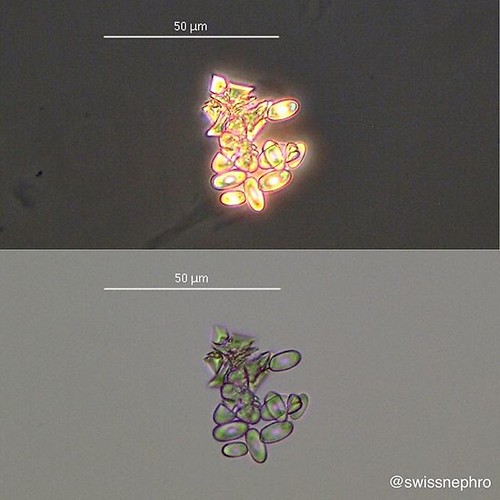Column. The solution of defining XMU-MP-1 site precise filters gives ZM241385 site Additional options for restricting the displayed data for the contigs of interest. The `Download’ button delivers various information export alternatives, as an example as an Excel table or FASTA file. We further make use of an enrichment evaluation widget (Figure B) that automaticallyperforms standard GO term and protein domain enrichment analysis amongst the listed contigs. Note that the default is often assumed to become the complete transcriptome from which the contig IDs are derived, but any saved list of contig IDs might be manually specified as . Yet another valuable feature is the potential to merge, subtract and extract the union amongst distinct saved lists by means of the action icons within the header line in the `view’ lists web page, enabling as an example the extraction of genes which can be both differentially expressed below an RNAi situation and also enriched in stem cells. Collectively, these attributes present a wide range of valuable data mining operations, the depth and scope of which we anticipate to raise quickly with all the integration of new data sets and sorts.D Nucleic Acids Analysis VolDatabase issueINTERSPECIES COMPARISONS A fourth objective of PlanMine is to allow sequence comparisons between various planarian species. The picture icons on the property web page designate the species currently in PlanMine (Figure A). Please note the four letter acronym from the species names which might be employed as prefix in contig names, e.g. Dendrocoelum lacteum Dlac. Clicking the image icons brings up the species pages, which offers specialist curated information and facts on distribution, life history and fascinating phenotypes of PubMed ID:https://www.ncbi.nlm.nih.gov/pubmed/6297524 the species, too as high resolution photographs aiding in species identification (Figure B). The linkout for the Turbellarian database (http:turbellaria.umaine. edu) integrates taxonomic information and facts. The nonSmed transcriptomes have been assembled together with the Rink lab transcriptome assembly pipeline (see the on the web aid manual of PlanMine for information, http:planmine. mpicbg.deplanminePlanMine Assist.htmlassembly) and as for Smed transcriptomes, we present an overview of assembly statistics and detailed assembly reports below the `Data Sources’ tab with the household web page. Transcriptomes  is often searched separately or all at once, working with the BLAST link on the species pages or by means of the household page. The usage of the verify boxes permits BLAST searches against single or multiple planarian species in PlanMine. The interrelational data architecture of PlanMine described above is excellent for interspecies comparisons, enabling by way of example the restriction of searches to a particular transcriptome, e.g. `all Wnt genes in Spol’. Additional, we supply precalculated sets of homologous transcripts also around the species level. `Homologues’ are identified by a reciprocal blastp (evalue .) evaluation among the longest ORFs of every single trinity graph element, hence actually representing probably orthologous contigs. Figure C illustrates the usage of these information for identifying the Dlac homologue of a Smed gene. Dlac is currently the only `new’ species in PlanMine for which RNASeq experiments have been published, particularly a time course comparison involving head regenerating wounds within the anterior body half and nonhead regenerating wounds within the posterior physique half . The availability of those information in PlanMine (Figure D) permits mining operations aimed at identifying Dlac head specification genes and, in conjunction using the expression dynamics of orthologous Smed contigs, possibly common p.Column. The solution of defining particular filters presents additional choices for restricting the displayed information towards the contigs of interest. The `Download’ button offers a range of data export solutions, one example is as an Excel table or FASTA file. We further use an enrichment analysis widget (Figure B) that automaticallyperforms basic GO term and protein domain enrichment analysis amongst the listed contigs. Note that the default is often assumed to become the full transcriptome from which the contig IDs are derived, but any saved list of contig IDs is often manually specified as . One more helpful function is the capability to merge, subtract and extract the union amongst distinct saved lists through the action icons in the header line of the `view’ lists web page, permitting for instance the extraction of genes which might be each differentially expressed beneath an RNAi situation and also enriched in stem cells. Collectively, these functions supply a wide selection of beneficial information mining operations, the depth and scope of which we expect to improve swiftly with the integration of new data sets and kinds.D Nucleic Acids Study VolDatabase issueINTERSPECIES COMPARISONS A fourth objective of PlanMine is usually to enable sequence comparisons involving different planarian species. The image icons around the house page designate the species at the moment in PlanMine (Figure A). Please note the four letter acronym in the species names which might be utilised as prefix in contig names, e.g. Dendrocoelum lacteum Dlac. Clicking the picture icons brings up the species pages, which gives expert curated information on distribution, life history and intriguing phenotypes of PubMed ID:https://www.ncbi.nlm.nih.gov/pubmed/6297524 the species, too as
is often searched separately or all at once, working with the BLAST link on the species pages or by means of the household page. The usage of the verify boxes permits BLAST searches against single or multiple planarian species in PlanMine. The interrelational data architecture of PlanMine described above is excellent for interspecies comparisons, enabling by way of example the restriction of searches to a particular transcriptome, e.g. `all Wnt genes in Spol’. Additional, we supply precalculated sets of homologous transcripts also around the species level. `Homologues’ are identified by a reciprocal blastp (evalue .) evaluation among the longest ORFs of every single trinity graph element, hence actually representing probably orthologous contigs. Figure C illustrates the usage of these information for identifying the Dlac homologue of a Smed gene. Dlac is currently the only `new’ species in PlanMine for which RNASeq experiments have been published, particularly a time course comparison involving head regenerating wounds within the anterior body half and nonhead regenerating wounds within the posterior physique half . The availability of those information in PlanMine (Figure D) permits mining operations aimed at identifying Dlac head specification genes and, in conjunction using the expression dynamics of orthologous Smed contigs, possibly common p.Column. The solution of defining particular filters presents additional choices for restricting the displayed information towards the contigs of interest. The `Download’ button offers a range of data export solutions, one example is as an Excel table or FASTA file. We further use an enrichment analysis widget (Figure B) that automaticallyperforms basic GO term and protein domain enrichment analysis amongst the listed contigs. Note that the default is often assumed to become the full transcriptome from which the contig IDs are derived, but any saved list of contig IDs is often manually specified as . One more helpful function is the capability to merge, subtract and extract the union amongst distinct saved lists through the action icons in the header line of the `view’ lists web page, permitting for instance the extraction of genes which might be each differentially expressed beneath an RNAi situation and also enriched in stem cells. Collectively, these functions supply a wide selection of beneficial information mining operations, the depth and scope of which we expect to improve swiftly with the integration of new data sets and kinds.D Nucleic Acids Study VolDatabase issueINTERSPECIES COMPARISONS A fourth objective of PlanMine is usually to enable sequence comparisons involving different planarian species. The image icons around the house page designate the species at the moment in PlanMine (Figure A). Please note the four letter acronym in the species names which might be utilised as prefix in contig names, e.g. Dendrocoelum lacteum Dlac. Clicking the picture icons brings up the species pages, which gives expert curated information on distribution, life history and intriguing phenotypes of PubMed ID:https://www.ncbi.nlm.nih.gov/pubmed/6297524 the species, too as  higher resolution photos aiding in species identification (Figure B). The linkout for the Turbellarian database (http:turbellaria.umaine. edu) integrates taxonomic details. The nonSmed transcriptomes have been assembled using the Rink lab transcriptome assembly pipeline (see the on the net assist manual of PlanMine for specifics, http:planmine. mpicbg.deplanminePlanMine Aid.htmlassembly) and as for Smed transcriptomes, we present an overview of assembly statistics and detailed assembly reports below the `Data Sources’ tab of your property web page. Transcriptomes is usually searched separately or all at after, using the BLAST link around the species pages or by means of the household web page. The use of the check boxes permits BLAST searches against single or various planarian species in PlanMine. The interrelational information architecture of PlanMine described above is best for interspecies comparisons, enabling for example the restriction of searches to a particular transcriptome, e.g. `all Wnt genes in Spol’. Additional, we give precalculated sets of homologous transcripts also around the species level. `Homologues’ are identified by a reciprocal blastp (evalue .) evaluation among the longest ORFs of each and every trinity graph component, therefore in fact representing probably orthologous contigs. Figure C illustrates the use of these data for identifying the Dlac homologue of a Smed gene. Dlac is at present the only `new’ species in PlanMine for which RNASeq experiments happen to be published, particularly a time course comparison in between head regenerating wounds inside the anterior body half and nonhead regenerating wounds in the posterior physique half . The availability of those data in PlanMine (Figure D) permits mining operations aimed at identifying Dlac head specification genes and, in conjunction together with the expression dynamics of orthologous Smed contigs, possibly common p.
higher resolution photos aiding in species identification (Figure B). The linkout for the Turbellarian database (http:turbellaria.umaine. edu) integrates taxonomic details. The nonSmed transcriptomes have been assembled using the Rink lab transcriptome assembly pipeline (see the on the net assist manual of PlanMine for specifics, http:planmine. mpicbg.deplanminePlanMine Aid.htmlassembly) and as for Smed transcriptomes, we present an overview of assembly statistics and detailed assembly reports below the `Data Sources’ tab of your property web page. Transcriptomes is usually searched separately or all at after, using the BLAST link around the species pages or by means of the household web page. The use of the check boxes permits BLAST searches against single or various planarian species in PlanMine. The interrelational information architecture of PlanMine described above is best for interspecies comparisons, enabling for example the restriction of searches to a particular transcriptome, e.g. `all Wnt genes in Spol’. Additional, we give precalculated sets of homologous transcripts also around the species level. `Homologues’ are identified by a reciprocal blastp (evalue .) evaluation among the longest ORFs of each and every trinity graph component, therefore in fact representing probably orthologous contigs. Figure C illustrates the use of these data for identifying the Dlac homologue of a Smed gene. Dlac is at present the only `new’ species in PlanMine for which RNASeq experiments happen to be published, particularly a time course comparison in between head regenerating wounds inside the anterior body half and nonhead regenerating wounds in the posterior physique half . The availability of those data in PlanMine (Figure D) permits mining operations aimed at identifying Dlac head specification genes and, in conjunction together with the expression dynamics of orthologous Smed contigs, possibly common p.